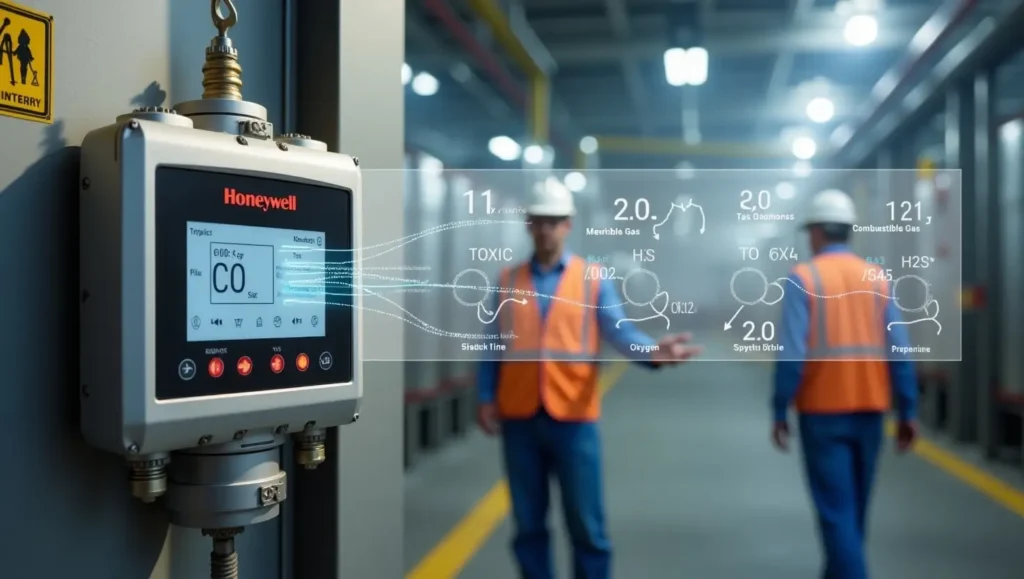Introduction
welcome to denzidesign.com Industrial workplaces often contain hazardous gases, posing serious risks to workers and operations. A reliable gas detection system is essential for safety and compliance. The Honeywell XNX Gas Detector is an advanced solution designed to monitor toxic and combustible gases, preventing potential dangers before they escalate. Known for its versatility, durability, and seamless integration, it supports multiple sensor types and communication protocols, making it ideal for oil and gas, chemical, and manufacturing industries. This blog explores how the Honeywell XNX enhances industrial safety through real-time monitoring, robust features, and best practices, ensuring a safer and more efficient work environment.
What Is the Honeywell XNX Gas Detector?
The Honeywell XNX Universal Transmitter is a multi-protocol gas detection system that supports a variety of sensor types, including electrochemical (EC), catalytic (mV), and infrared (IR) sensors. It provides real-time gas monitoring, alerting personnel to potential hazards before they become critical.
Key Features of the Honeywell XNX Gas Detector
- Compatibility with Multiple Sensors: Works with EC, mV, and IR sensors to detect various gases.
- Flexible Output Options: Supports HART®, Modbus, and Foundation Fieldbus for seamless system integration.
- Robust Construction: Available in LM25 aluminum or SS316 stainless steel for harsh environments.
- User-Friendly Interface: Large backlit LCD for clear visibility and easy operation.
- Multiple mounting options: provides installation flexibility for diverse industrial setups.
How the Honeywell XNX Gas Detector Enhances Industrial Safety
1. Real-Time Gas Monitoring & Early Warning System
The Honeywell XNX continuously monitors gas levels, ensuring early detection of toxic or combustible gases. The 4-20 mA analog signal and digital outputs provide real-time updates, allowing quick response to potential hazards.
2. Seamless Integration with Industrial Safety Systems
The XNX supports industry-standard communication protocols like HART® and Modbus, enabling integration with SCADA and Distributed Control Systems (DCS). This ensures comprehensive safety management.
3. Versatile Sensor Options for Comprehensive Coverage
Industries require different gas detection capabilities based on their operations. The XNX is compatible with:
- Electrochemical sensors (for toxic gases like CO, H2S, and O2).
- Infrared sensors (for combustible gases like methane and propane).
- Catalytic bead sensors (for flammable gas detection in explosive environments).
4. Durable and Reliable for Harsh Environments
Designed for industrial use, the Honeywell XNX has a rugged, weatherproof enclosure and can withstand extreme temperatures and humidity. It is suitable for offshore rigs, chemical plants, and confined spaces.
5. Ease of Calibration and Maintenance
XNX Gas Detector Calibration is simplified with non-intrusive operation. Routine maintenance can be performed without shutting down the system, reducing downtime and operational disruptions.
How to Set Up and Use the Honeywell XNX Gas Detector
Step 1: Installation and Wiring
- Mount the XNX transmitter in an appropriate location.
- Follow the XNX XNX Transmitter Wiring Diagram for correct electrical connections.
- Ensure proper sensor placement for optimal gas detection.
Step 2: Configuration and Setup
- Use the XNX XNX Honeywell Analytics 40 Setup guide to configure settings.
- Adjust sensor type and output preferences based on industrial requirements.
Step 3: Calibration and Testing
- Perform XNX Gas Detector Calibration using standard calibration gases.
- Run system diagnostics to ensure accurate readings.
Step 4: Ongoing Maintenance and Troubleshooting
- Regularly inspect sensors and clean them to maintain accuracy.
- Update firmware if needed for optimal performance.
Honeywell XNX Gas Detector: Industry Applications
The Honeywell XNX is widely used in:
- Oil and Gas: Monitoring flammable gases in drilling and refining operations.
- Chemical plants: detecting toxic gas leaks in production facilities.
- Manufacturing: Ensuring air quality and safety in confined spaces.
- Water Treatment: Monitoring chlorine and other hazardous gases.
Why Choose the Honeywell XNX Gas Detector?
- Reliability: Proven performance in industrial environments.
- Flexibility: Supports multiple sensor types and output formats.
- Ease of Use: Simple installation, configuration, and maintenance.
- Industry Standards Compliance: Meets global safety regulations.
Conclusion
Industrial safety depends on effective gas detection, and the Honeywell XNX gas detector is a powerful solution for preventing gas-related hazards. Its real-time monitoring, flexible integration, and durable construction make it an industry favorite. If you’re looking for a reliable gas detection system, the Honeywell XNX is a top choice.
Call to Action
Interested in implementing the Honeywell XNX Gas Detector in your facility? Contact an authorized Honeywell distributor today or download the official Honeywell XNX User Manual for more details.

